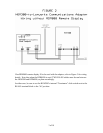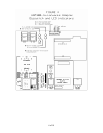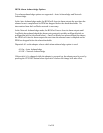18 of 18
LED 1 and LED 2 will normally show activity about every 15 seconds. Since the
refrigerant monitoring process is fairly slow and new data is only available every 15
seconds or so, the adapter polls the HGM at a slow rate to reduce the communications
burden on the HGM main processor. Again, commands coming in from LonWorks
might occasionally cause LEDs 1 and 2 to blink more frequently.
Operating Notes
Before changing alarm thresholds through nviSetZoneThresh, go ahead and set
nviGetZoneThresh to the zone you are about to modify. Then nvoHgmZoneThresh will
update automatically with the current thresholds for that zone every time new information
is available from the HGM300.
Please note that it could take as much as 30-40 seconds before the changes made through
nviSetZoneThresh can be seen on nvoHgmZoneThresh. The adapter must get the
changes from LonWorks and pass the new thresholds down to the HGM. The HGM then
takes a certain amount of time to process the changes and store them in its nonvolatile
memory. Then, since the HGM is not polled continuously, a certain amount of time is
needed to pick up the new threshold settings and pass them back up to LonWorks. Please
be patient waiting for changed alarm thresholds to show up in nvoHgmZoneThresh.
Fortunately changing alarm thresholds is done infrequently after initial installation and
setup.
If the adapter is moved to a new LonWorks network where the old addressing
information would be invalid, the adapter can be set back to its initial Unconfigured state.
This is accomplished by holding the Service button down, powering up the adapter, and
continuing to hold the Service button down for 10 seconds. When the Service button is
released, the Service LED will flash, showing that the LonWorks portion of the adapter is
now Unconfigured. This is the desired state for installing the adapter on a new
LonWorks network.


















